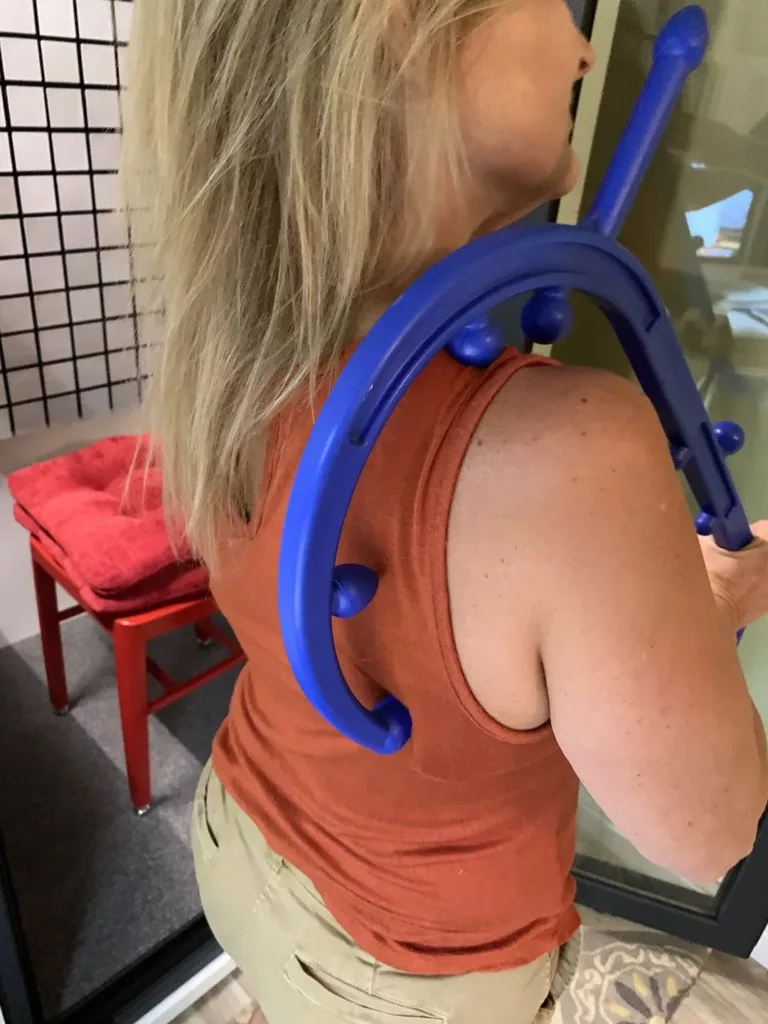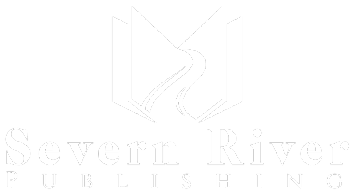Healthy Narration Habits
#BoothHealth
What is #BoothHealth? I use my 15 years of experience as a medical myofascial therapist to educate fellow narrators on posture, breathing, and easy habits to stay healthy in the booth.
Swinging
Move over, kids! Swinging is good for adults too. It’s #BoothHealth Tuesday and I’m talking about swinging in a swing or a hammock, romance narrators ![]()
Taking breaks from sitting or standing for hours in our booth is crucial to maintaining our health and well-being. Engaging in various activities during those breaks pushes some powerful re-set buttons on our physical and mental nature.
Swinging brims with sensory input in a calming way: the breeze that blows over your skin, the sensation of flying, the feeling of weightlessness, the relief for the eyes to view the distant scenery. Actively swinging in a traditional swing can burn about 200 calories per hour!
It’s springtime, and a perfect time to install some kind of swing or hammock in your world.

Pet Peeves
Hi #BoothHealth Tuesday friends. This is Mr. Peeve. He is my pet peeve. I asked Voice Actor and Vocal Coach, Nic Redman Voice to tell me her pet peeve in the vocal health world.
She said “It’s completely useless to say ‘use the diaphragm’ as the solution to many voice issues. It’s not a useful piece of advice because we can’t feel our diaphragm as there are no proprioceptive nerves in it, so it’s not actually possible to know if you are ‘using it’ because we literally can’t feel it. It’s much more useful to focus on release of the abs on the IN breath”.
Great advice, Nic! Now add my advice, which is to drop the shoulders and let your body feel heavy on the OUT breath.You won’t “feel your diaphragm being used”, but you’ll be using that workhorse of a muscle with these techniques!
My peeves feel less stressful already.
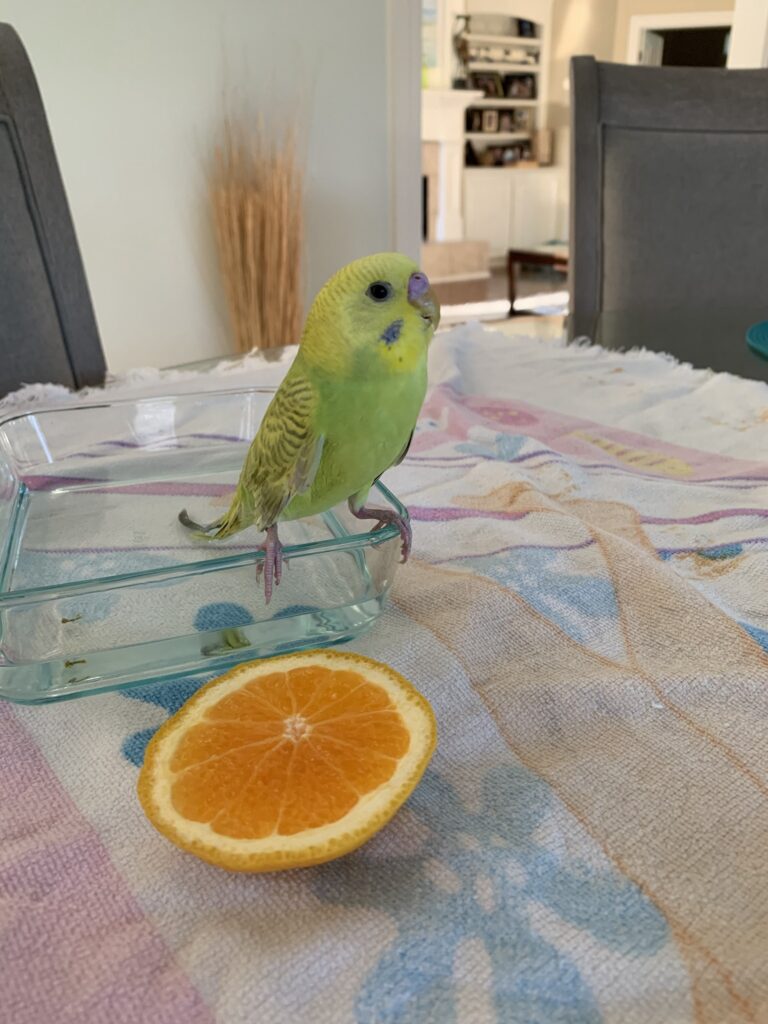
Chest First
Let your chest enter the room/booth first! It’s #BoothHealth Tuesday and many people (especially women) live and move with their breastbone held down. Often they are “protecting” themselves, their modesty, their psychological sensitivities. This posture drags the collarbones down and the shoulders roll forward causing the neck and head to jut forward. The stress that this causes at the back of the neck can lead to a build-up of connective tissue, which can result in a condition known as “dowager’s hump.” Lift from the crown of the head and the ribs to avoid this.

Standing Room Only
Do you think you are sedentary or active? Most people don’t think of themselves as sedentary, but we narrate/sit at a desk, sit for meals, drive or ride a bus, and plop on the sofa to watch TV. The effects of all this sitting has been shown to create detrimental health problems, such as diabetes, obesity, high blood pressure, and depression. Research shows that even going to the gym for an hour a day does not reverse the effects of sitting for long periods at a time. Take frequent breaks, walk, stand, squat, run in place, take the stairs, or try an unstable chair, such as a yoga ball, or stool.

Exercise Your Vocal Chords
When I was a child, I thought the trachea and esophagus looked like the plumbing under the kitchen sink. I guess I heard someone say something went down the wrong pipe. In case you’ve ever been that confused about vocal cords, they do not look like bungees Rather, they are made up of layers of epithelial cells, connective tissue and muscle.
Vocal Health Coach, Austenne Grey says to keep your vocal folds in shape for hours of narrating try this:
“The straw is your new best friend. For five breaths, inhale and exhale through the straw. Make a note of where expansion takes place. HINT: it should be low i.e., inhaling should have a “baby belly” effect. No movement in the shoulders. Then, for five more breaths, inhale through the straw then, exhale while humming! HINT: You should feel a reverse megaphone effect. Wide and relaxed in the back of the throat. Air pressure sent from the lungs meets with back-pressure created by the straw thus, making sure the vocal folds are properly aligned.
Add this to your warm-up and throughout the day.”
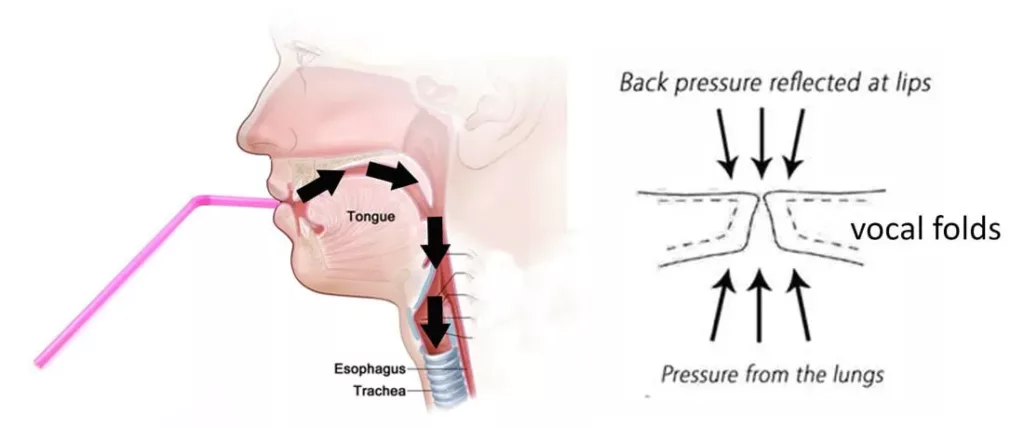
Breathe Like a Baby
Let’s talk about the big breathing muscle, the respiratory diaphragm.
It’s a big sheet of muscle that separates the thoracic cavity from the abdominal cavity. Your heart sits right on top of it! We’ve all heard about diaphragmatic breathing and how important it is for people who use their voice for their work. There is some confusion, because some call it belly breathing, and, trust me, you don’t breath in and out of your belly. However, relaxed and natural breathing does make your belly expand outward as you inhale. That’s because your diaphragm muscle is contracting and pushing downward toward your abdominal organs. Lots of folks do it backwards but babies always do it right.
Check yourself and see if you breathe like a baby!
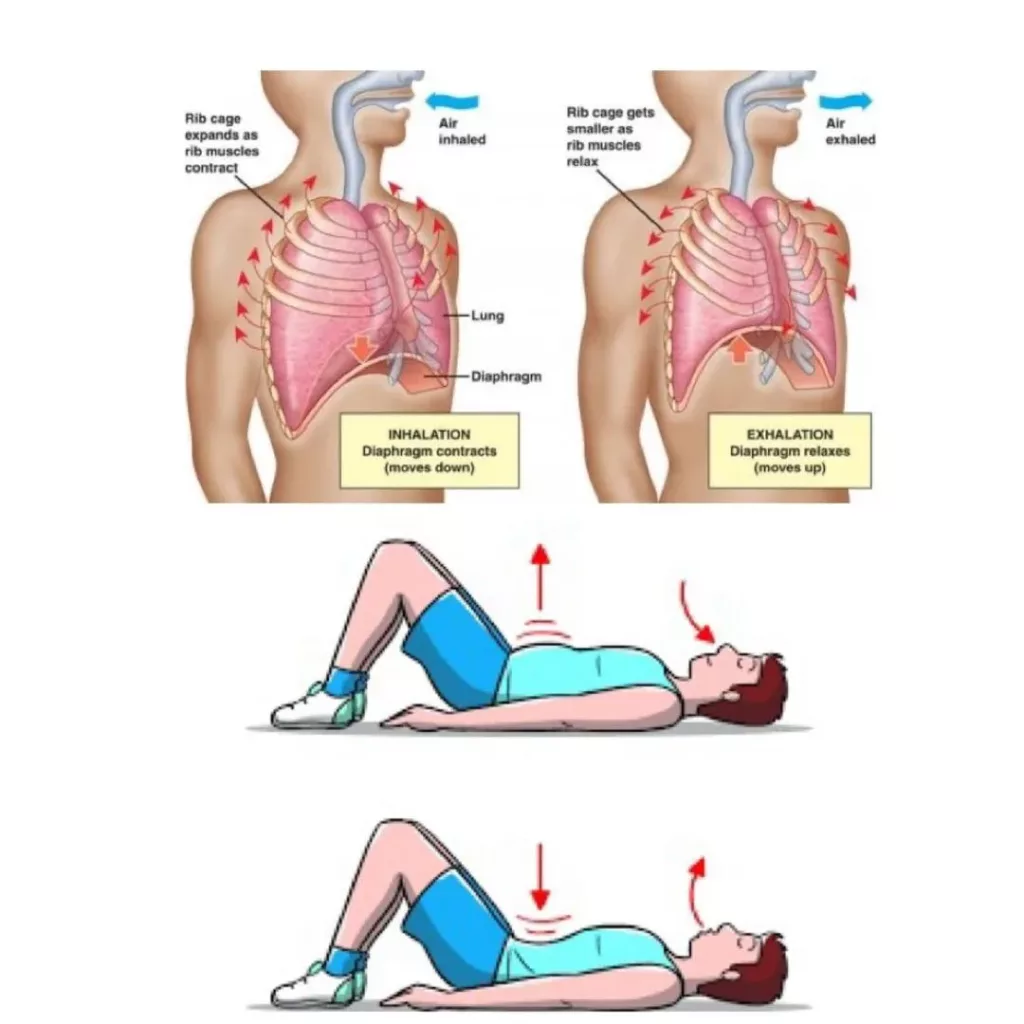
Accessory Muscles
Today’s muscles are accessory muscles for breathing. The Sternocleidomastoid muscle and the Scalene muscle function to move your head, but they also act as breathing helpers when you’re out of breath like after some hard exercise or narrating a really long sentence with no commas.
When we live in a constant state of anxiety, hurrying and stress , we tend to recruit these muscles with shallow breathing rather than using our main breathing muscles, the Respiratory Diaphragm and the muscles between our ribs. This can become habitual and cause the accessory muscles to become over-worked and tense.
Next week: The Respiratory Diaphragm. The Big Bad-A Breathing Muscle.
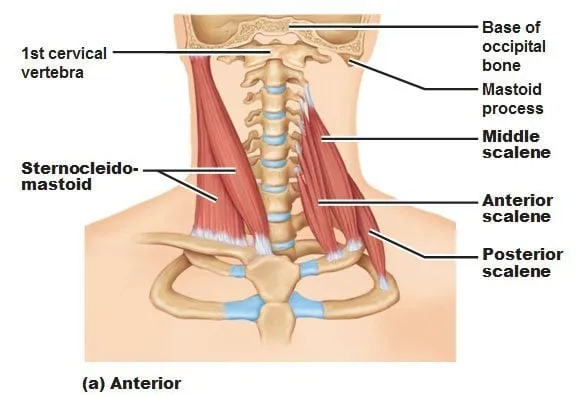
Your Feet Need Love Too
Whether you narrate in a standing or a sitting position, your feet need some love.
Try standing in your socks or bare feet and notice where you feel the weight of your body on the bottoms of your feet. On the balls? The heels? The outside? The inside?
Now use a foot roller, or even a water bottle to roll the large layers of fascia on the bottom of your feet. Roll each foot for a minute or two. Stand and notice where you feel your weight now. Do you feel more grounded and even?
Keeping the plantar fascia supple and pliable will translate up your body for improved posture.
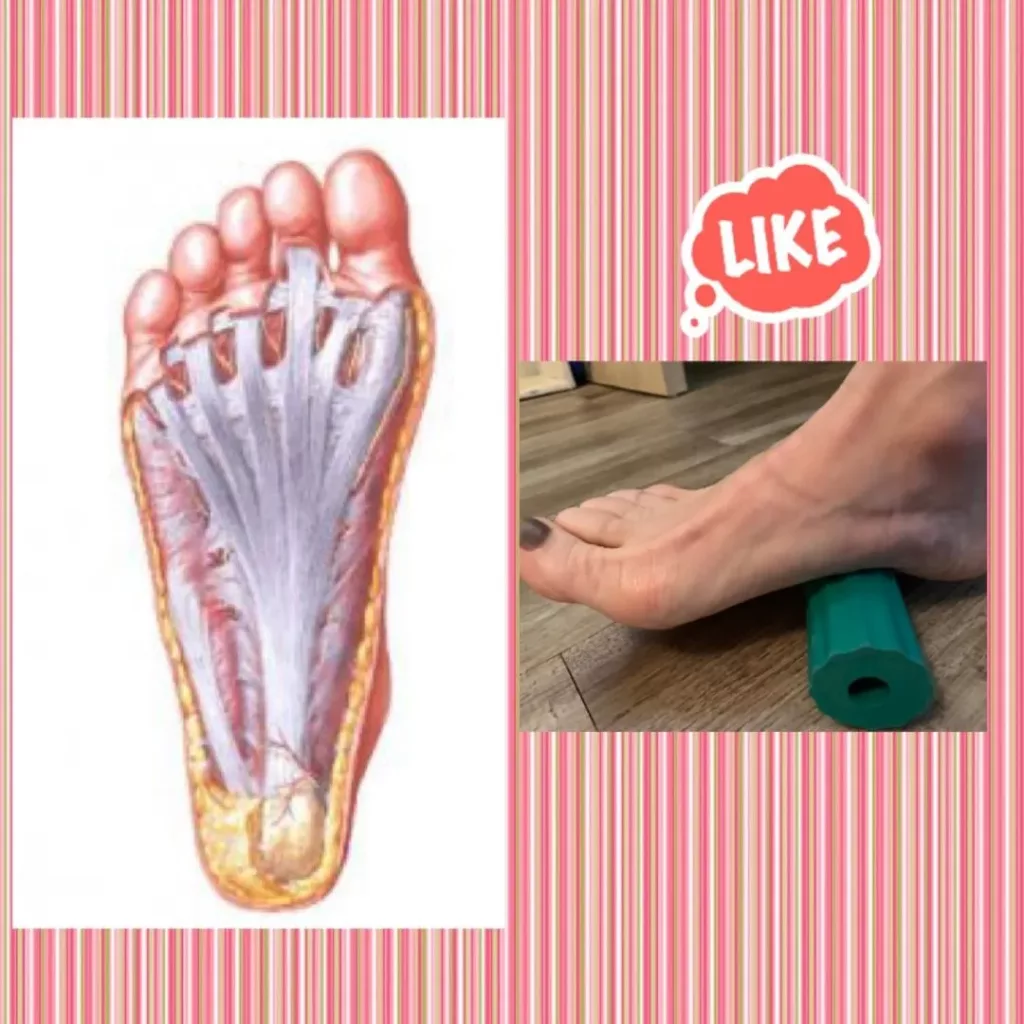
S-T-A-N-D
Hey booth buddies, we can sit for long stretches. Can you stand up from your chair without pushing off with your hands or getting a rocking momentum going first?
Try this everyday to strengthen your leg and butt muscles. Your future self will thank you.
It’s called STAND:
S see straight in front of you
T toes pointed forward
A angle your torso so that..
N nose is over toes
D drive through your heels as you push to a standing position
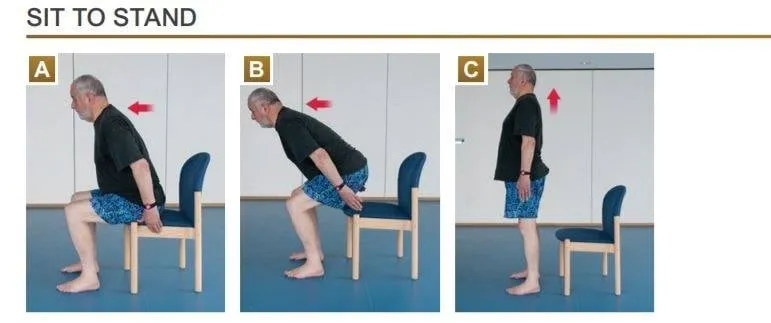
Help Yourself While Driving
Once in a while, we narrators have to drive to the store for snacks or toilet paper, so here is a driving tip, which is now sanctioned by the NHTSA. Keeping your pecs open keeps nerve impulses and blood flowing and helps improve posture.
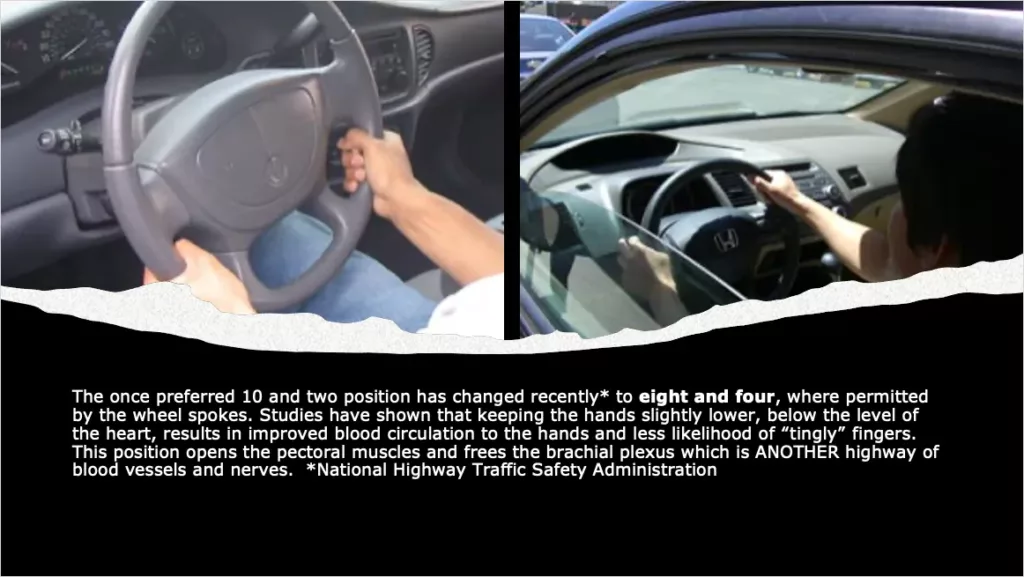
Swing to the Rhythm
When you hear the word POSTURE, do you automatically straighten your spine and throw your shoulders back? Yes, posture is all about alignment of our physical bodies, but let’s go one step further.
Posture is also how we perceive ourselves in the the world and in the space we inhabit. When we are sad, we slump. When we feel confident, our bodies are lifted. This is a form of communication between our minds and bodies that is easily read by other humans. Swing high today and open yourself to the sky. Then ride that swing down close to earth when you need a rest.

Enjoy the rhythm of your breath and life.
Holiday Advice
Let’s meet a muscle group that’s shaped like a Christmas tree. The Rhomboids are a group of muscles in the upper back which, when contracted, pull your shoulder blades together. They also help stabilize your shoulder blades against your ribs, and when they are strong, help maintain beautiful posture. Keep them strong by adding this little movement to your life.
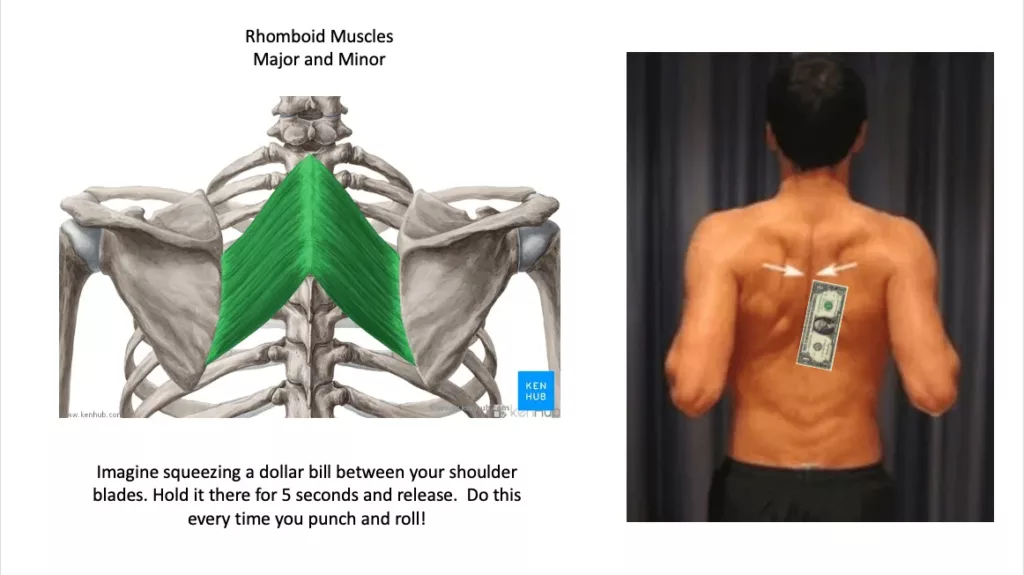
Listen to your Spectrogram
When your RX Spectrogram reminds you that posture is everything.

Your Intertwined Web
The body’s tissue, fascia, is a complex intertwined web that encompasses every structure within our anatomy. Tom Myers, author of Anatomy Trains, shows us, in this video, just how connected we really are. *squeamish alert, it’s a cadaver* When we sit like a banana, this is the continuous line of the fascial system that is being overstretched and weakened.
Your Eyes Need Breaks Too
Let’s look at the BACK of our heads. Meet the suboccipital muscle group which connects your cranium to the first two vertebrae of your neck. When looking at a computer screen all day, we tend to squint, strain, crane our necks forward. The suboccipital muscles are directly connected to eye movement and have a load of receptors that tell our brains where our head is, in space. When we have poor posture, the suboccipital muscles become tight and can send tension up into the head and down to the lower back and pelvis. Give your eyes regular rest breaks. Your body will thank you.
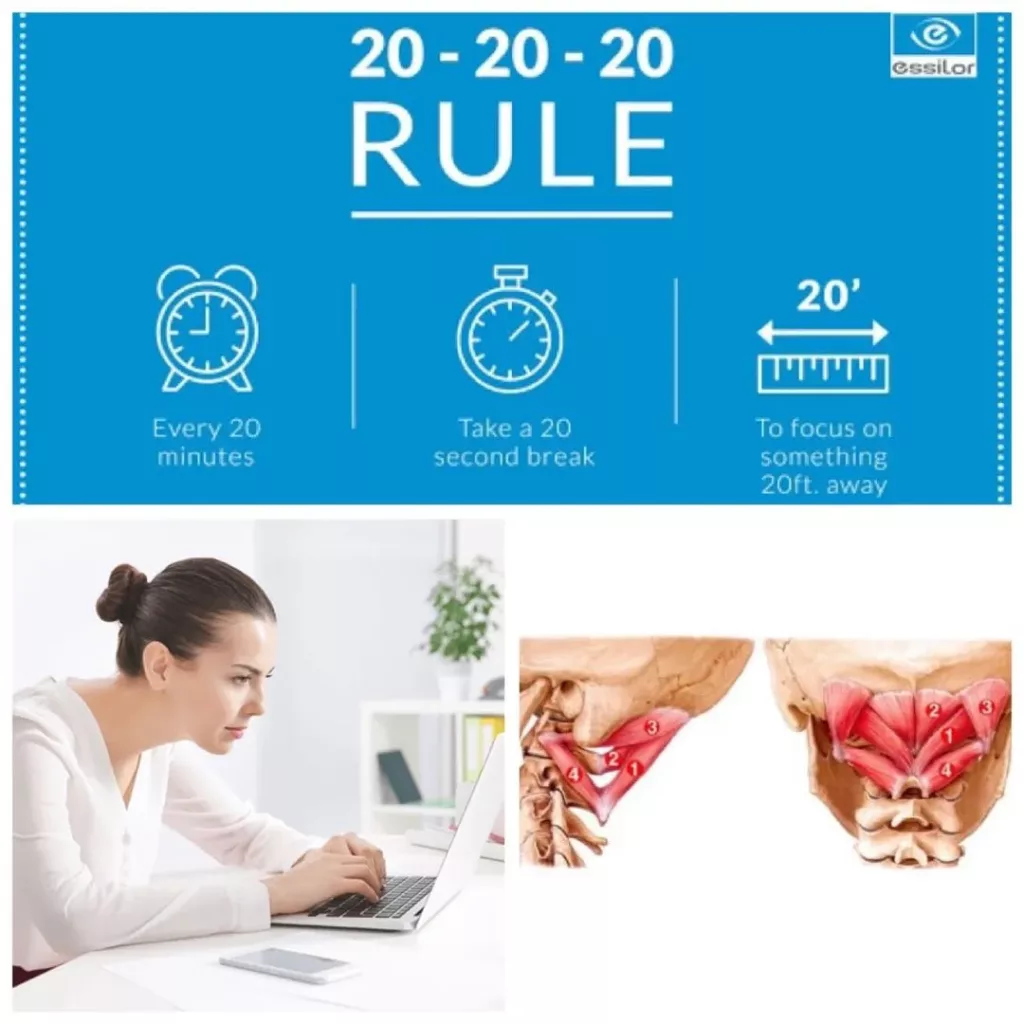
Tingler
It’s another “gadget” day and this one is an inexpensive DIY scalp “TINGLER.” We all know that the best part of getting our hair done at the salon is the scalp massage at the shampoo bowl. Why? Lots of nerve endings and touch receptors in the scalp send signals to the brain causing a relaxation response as well as an effect of “liveliness.” So, take a tingle break today.
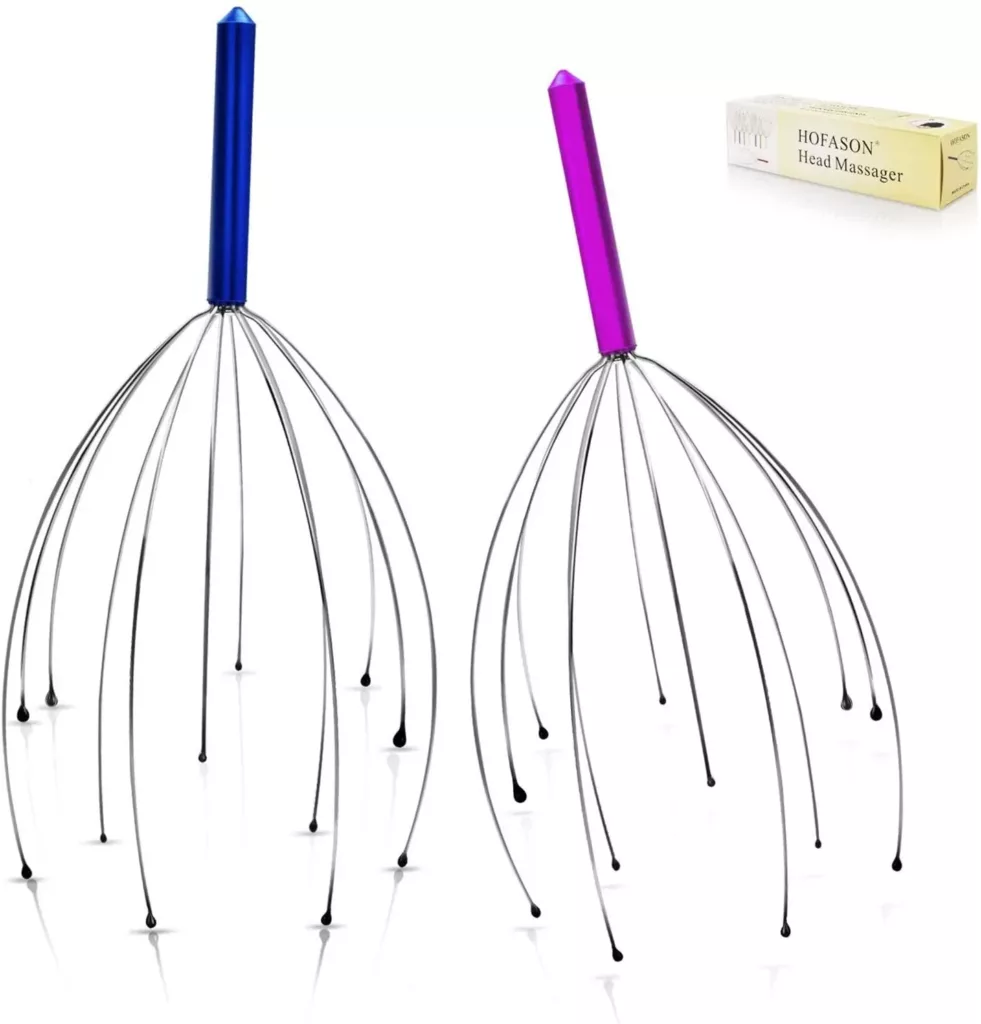
Keep Your Head Up
I have another nice muscle for you to meet; Levator Scapulae. Its main job is to elevate the shoulder blade, but when we develop a head forward posture, it becomes overused and over stretched, causing weakness and pain. Try this stretch, using a towel, to keep from over extending your neck. Wrap the towel around the back of your neck, tilt your head back and pull GENTLY downward on the ends of the towel. Hold for about 10 seconds. If you feel pain, stop.
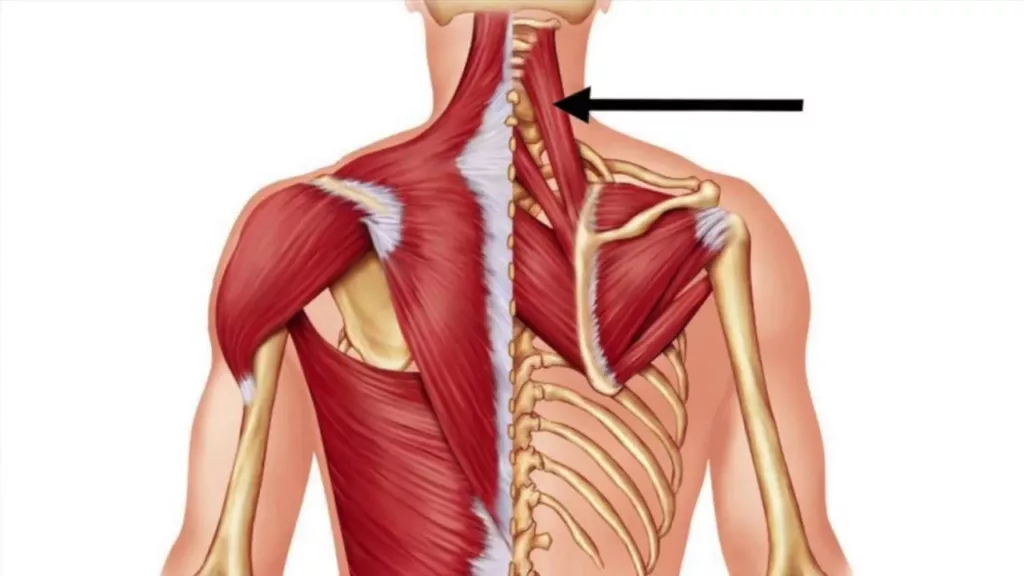
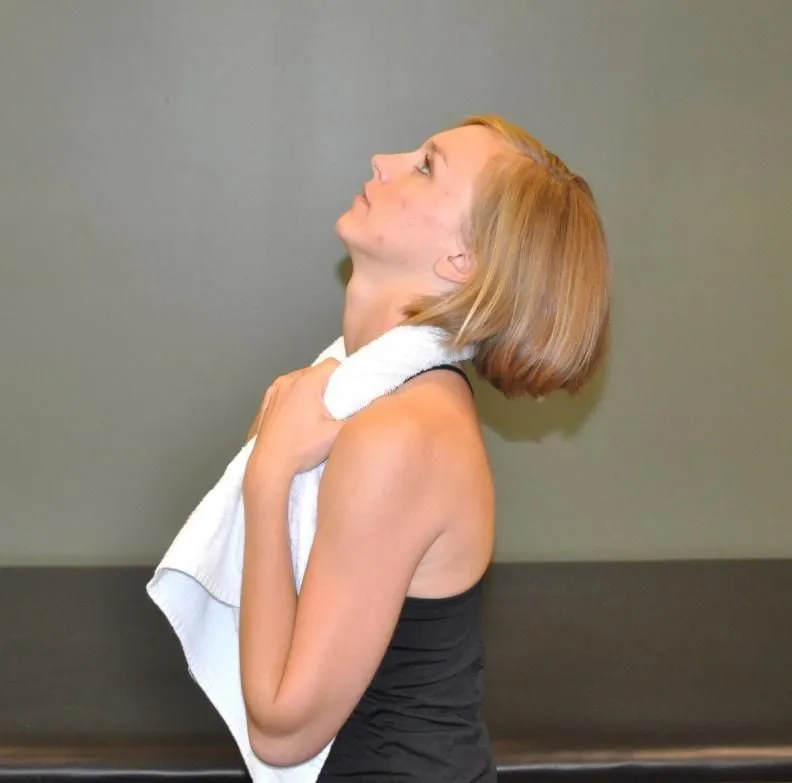
Use Your Big Toe
Here’s an exercise for strengthening the muscles of your lower legs. These muscles promote stability, prevent sprains, prevent falls, and prevent overuse injuries from exercising. And guess what? You can do it in your booth, at your desk, or on an airplane (remember those?). In a seated position, simply imagine your big toe is a pen and write the letters of the alphabet in the air.
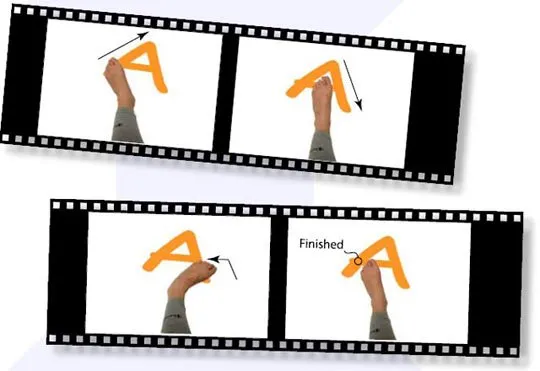
Tuck that Chin!
Time for a corrective exercise for Forward Head Posture. FHP can lead to shoulder problems, neck pain and and vocal fold strain. Our own vocal expert, Nicola Redman, can tell you more about releasing your voice but here is a little start in the right direction.
This can be done while standing OR sitting:
Perform a chin tuck by keeping your chin parallel to the floor and drawing your head backwards. This turns on the muscles in the front of your neck, so you might feel a sensation there.
You might also feel stretching in the back of the neck and at the base of the skull which is okay.
Do not push through pain.
Repeat at least 5 times.
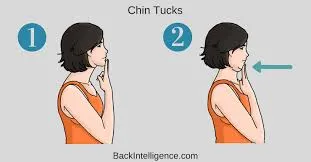
Awake those Adductors!
Let’s all look at our groins today A group of muscles called the adductors make up the area of the inner thigh known as the groin. These muscles bring the leg toward the center of the body, as in crossing one leg in front of the other. They are also stabilizers for sitting and standing. Too-tight or too-weak adductors can lead to hip or lower back pain. Try this stretch and squeeze a pillow to warm and awaken those adductors.
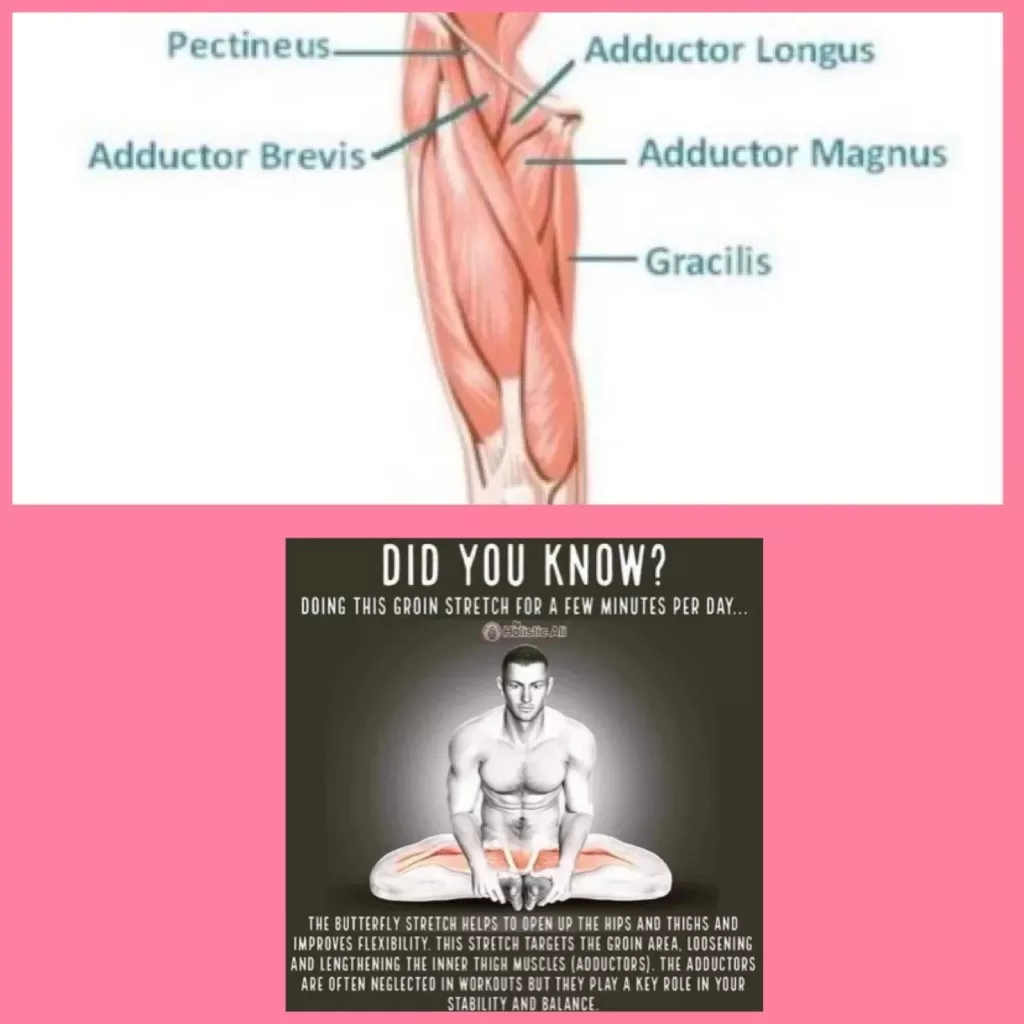
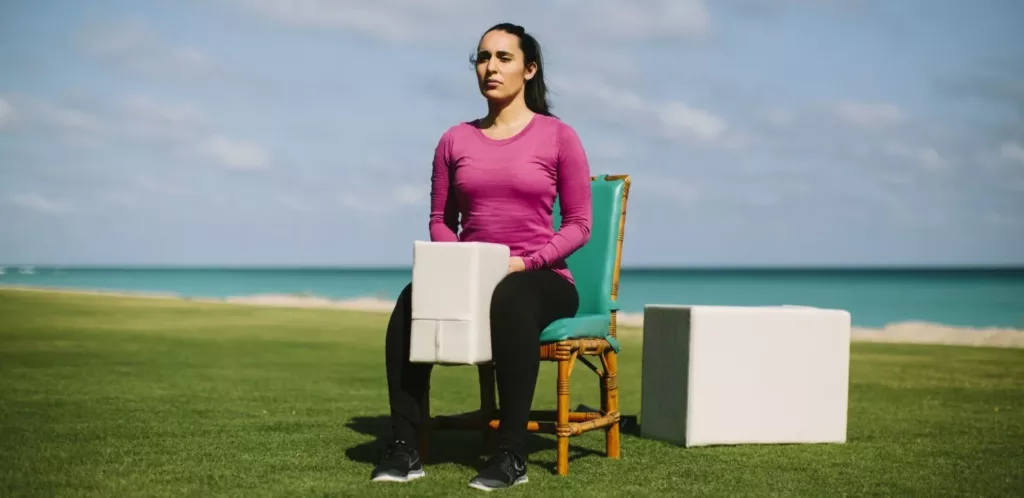
Take a Deep Breath
Take a deep breath and check out these three simple breathing exercises.
We may not think about breathing on a regular basis, but exercises like these can improve breathing stamina and control for performers such as long form narrators, singers, actors, and public speakers.
Check out this article from Consumer Reports.
Stretch that Psoas!
Today’s featured muscle is the Psoas (pronunciation Sō-az). It’s very deep and runs from our lower spine to the top of the upper leg bone (femur). After sitting for long periods, it can become tight or weak causing the pelvis to be pulled out of alignment and then, back pain. Give it a stretch when you break from the booth.
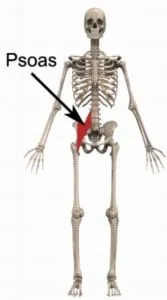
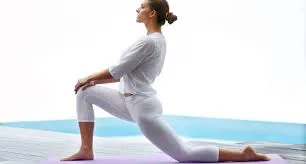
Your QL Needs Love
Today’s feature is one of my favorite muscles! The Quadratus Lumborum, also known as the QL, or hip hiker muscle, lifts the pelvis toward the ribcage with each step you take. It can become sore/tight/weak from excessive SITTING.
Give your QL a little love today.
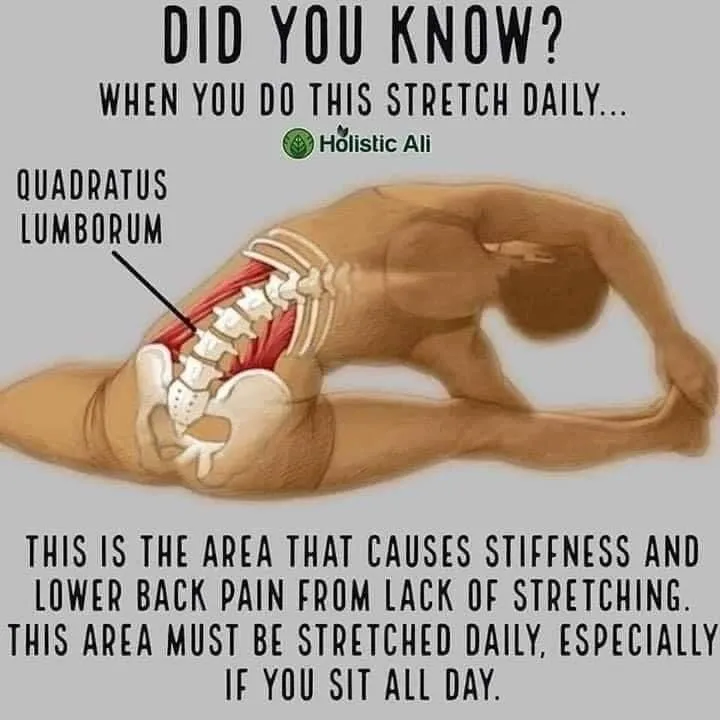
A Booth Buddy for You!
This Back Buddy, or therapy cane, can help you get to those trigger points and sore spots when you’re all by yourself and can’t get to your Myofascial Therapist. I mean, we DO spend a lot of our time alone in the booth, so having a buddy is nice!
